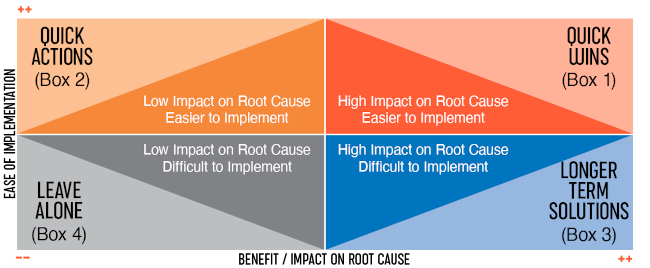What is a HubSpot Portal Audit and Why Do I Need One?
HubSpot is a powerful marketing, sales, and customer support tool, but getting the most out of it can be a challenge. At the end of the day, you need HubSpot to generate enough leads that become customers, so your marketing investment pays for itself.
The purpose of a portal audit is to ensure you’re getting the most value from your HubSpot investment.
Common Reasons to Do a Portal Audit
Whether you’re brand new to HubSpot or have been using it for a while, now is the perfect time to conduct a review of your portal. Yet even a basic review can be a daunting task. Should you focus on the technical aspects, housekeeping, or marketing performance?
While it may be tempting to do it all at once, the decision should be based on your struggles and goals. For example:
- You want to increase traffic to your site
- You want to increase your site’s overall conversion rates
- You want to increase the quality of your leads and convert more leads into customers
- Your contact database is a mess, and you need to clean it up
- You have so many lists, workflows and more that you don’t know what’s what
Let’s take a look at each.
This Place is a Mess
Like a teenager’s bedroom, your portal can quickly become disarray. Users with too much access can create lists, emails, and other assets, then abandon them once they’ve served their purpose. With no one cleaning up behind them, they stay saved in your portal for eternity.
Here’s a laundry list of assets a portal audit might review:
- Lists
- Workflows
- Sequences
- Emails
- Landing Pages
- Forms
- CTAs
- Campaigns
- Report Dashboards
While a cluttered portal doesn’t directly affect your bottom line, the hidden cost to your team’s productivity does. If people are spending too much time trying to find what they’re looking for, then make an asset portal audit a top priority.
It’s Too Crowded in Here
Let’s face it. Many of the contacts in your CRM have overstayed their welcome. You’re just too nice to throw them out.
These may be people who were originally thrilled to meet you but have ignored your recent attempts to contact them. Whether your emails to them have bounced, they’ve unsubscribed, or they haven’t opened your recent messages, they need to go.
Or perhaps you invited them to the party but came to regret it. You thought you’d become fast friends but soon realized you have little in common.
In the marketing world, we call these poor fit leads. It’s time to admit these people will never do business with you. (Or if they do, you’ll wish they hadn’t.)
Remember, you’re only allowed a certain amount of contacts in your database. Intentionally or inadvertently exceeding your contact limit will get you automatically upgraded to the next pricing tier. Cleaning your database can prevent this unexpected (and costly) surprise.
Who Turned Off All the Lights?
If you weren’t properly onboarded when you first purchased your HubSpot subscription, chances are numerous settings are not configured properly.
While it won’t be as obvious as stumbling around in a dark room, incorrect settings can cause the occasional stubbed toe.
Oftentimes a client will discover something that’s not working as expected – such as blog subscribers not receiving email notifications when a new article publishes. Inevitably, we’ll find blog settings that were never configured, or that the GPPR legal basis for processing the contact’s data is not set up to allow the email to send.
There’s no one size fits all to configuring your portal settings and each company’s needs are unique. For this reason, many of HubSpot’s settings are not enabled by default. It’s important to know what each setting does and why you should (or shouldn’t) enable it. A thorough settings audit can prevent costly mistakes before they happen.
Get Out and Drive!
It’s great to have a clean house and a few hundred close friends to invite over. But sometimes you just need to get out of the house and drive.
I love analogies and comparing HubSpot to building a house is fun. But you can't drive your house. So a better analogy is that of a race car.
Unfortunately, HubSpot comes disassembled.
Hopefully, once your onboarding was finished, you were ready to run a few races – also known as marketing campaigns. But perhaps your performance was less than stellar. Unless you have a strong marketing team or agency behind you, figuring out why often gets neglected.
A marketing-centric portal audit will focus – not on the technical or database aspects of your portal – but on the analytics and key performance indicators (KPIs) of your overall website and individual campaigns.
The final often overlooked step in this type of audit is identifying ways to improve your performance. This requires a deep understanding of marketing to analyze and remove the myriad of possible roadblocks to your poor performance – roadblocks such as high bounce race, poor targeting or segmentation, irrelevant content, and more.
Choosing the Type of Audit You Need First
While there are many types of audits you could conduct, we've identified three: an asset audit, a database audit, and a performance audit. So which should you prioritize?
An effective framework for deciding priorities is the Impact Effort Matrix. Once you’ve picked a focus, concentrate on three to five specific activities for the next few months and work on gradual improvement toward your goal.

Remember, resist the temptation to fix everything at once. Your ability to successfully complete a project is inversely proportionate to the number of projects you attempt to tackle at once. Staying connected to your original goal will set you on the path to success.
Ensure you’re on track with our 18-point Hub Portal Inspection!
Our audit is not an all-encompassing review, we’ve designed it to include elements from the three types of audits we’ve described above. Get yours today!

